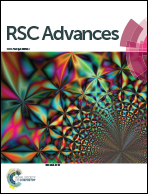A nanogel with passive targeting function and adjustable polyplex surface properties for efficient anti-tumor gene therapy†
Abstract
Non-cytotoxic vectors with high transfection efficiency and serum stability play a key role for successful gene delivery, which is strongly determined by polyplex structural properties and cellular affinity. In this study, through modifying the “gold-standard” transfection agent poly(ethylenimine) (PEI) with non-cytotoxic monomer N-isopropylacrylamide (NIPAM), we successfully developed a thermosensitive cationic PNIPAM/PEI nanogel. It has a crosslinked thermosensitive core and cationic shell with adjustable dimensions, surface potential and passive cellular targeting function. The polyplex properties such as size, surface potential, thermo-sensitivity and serum stability of the nanogel was systemically investigated by laser light scattering. It was found that the in vitro transfer efficiency by the nanogel was about two times higher than that of PEI, which was further enhanced about two time as T > VPTT due to the passive cellular targeting. The obviously enhanced in vitro cellular uptake, gene transfer efficiency and corresponding mechanism of the nanogel were then revealed by inverse fluorescent microscopy, a flow cytometer and confocal laser scanning microscopy. Its biodistribution and high intratumor accumulation were also evaluated in a Balb/c nude mice xenograft tumor model. Such a sophisticated nanogel significantly suppressed tumor growth with a volume 5 times smaller than that of PEI, which indicated its high potent for practical gene therapy.


 Please wait while we load your content...
Please wait while we load your content...